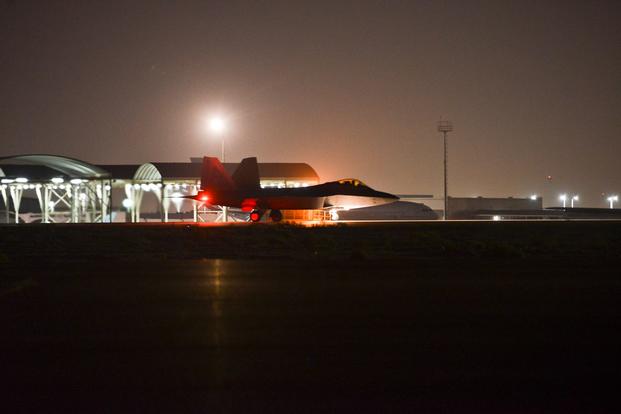The U.S. military has quietly ended a once-touted bombing campaign against drug labs in Afghanistan aimed at cutting off Taliban funding, according to John Sopko, the Special Inspector General for Afghanistan Reconstruction.
"They're no longer doing it, which may indicate how effective it was," Sopko told defense reporters at a breakfast Wednesday.
He said the Operation Iron Tempest bombing campaign, begun in late 2017, "didn't have the intended effect of hitting the Taliban's purse and was probably a waste of resources."
U.S. Central Command referred questions on the bombing campaign to U.S. Forces-Afghanistan, which did not respond directly to whether the operation had been called off.
"United States Forces-Afghanistan's efforts are aimed at setting conditions for a political settlement and safeguarding our national interests," a spokesman said in an email. "The grand majority of our strikes are lethal strikes against the Taliban or ISIS."
Sopko said the only factors that appeared to impact the poppy and heroin trade are erosion and drought, not the bombing campaign.
Last November, the United Nations Office on Drugs and Crime (UNODC) reported that the total area under opium poppy cultivation in Afghanistan remained "at very high levels" despite a 20 percent decrease from 2017.
However, the decrease was attributed to the severe drought that hit northern and western regions of Afghanistan in 2018, UNODC said.
"Despite the decreases, the overall area under opium poppy cultivation is the second highest ever recorded," UNODC Executive Director Yury Fedotov said in the report. "This is a clear challenge to security and safety for the region and beyond."
Operation Iron Tempest was one of the first initiatives that resulted from President Donald Trump's national address In August 2017, in which he announced a new "conditions-based" strategy for Afghanistan that called for more troops and airstrikes.
The bombing campaign against the drug labs began with high expectations. The most advanced fighter in the U.S. inventory, the F-22 Raptor, was deployed and the military distributed videos of strikes in southwestern Helmand province, the center of the drug trade, and other areas.
On Nov. 20, 2017, Army Gen. John Nicholson, then-commander of U.S. and NATO forces in Afghanistan, announced that the first "significant" action under the new strategy for Afghanistan had been taken in the bombing of several Taliban drug centers, using an F-22 and a B-52 Stratofortress bomber, among other aircraft.
"Last night, we conducted strikes in northern Helmand to hit the Taliban where it hurts, in their narcotics financing," Nicholson said. "The new authorities allow me to go after the revenue streams of the enemy."
However, Sopko said the revenue streams proved to be resilient. He said officials of the U.S. Drug Enforcement Agency and the State Department's Bureau of International Narcotics and Law Enforcement Affairs warned from the start that the bombing campaign was poorly planned.
"Experts there told us that this was not going to succeed, because the labs that were destroyed were extremely small and mobile," Sopko said. "They cost about $500 to build and operate."
The lack of a definitive answer from the military on the status of Operation Iron Tempest reflected the administration's current habit of classifying information that previously would have been routinely included in periodic reports, such as the casualty rate of Afghan forces, Sopko said.
"Almost every indicia, metric for success or failure is now classified or nonexistent," he said. "Embarrassing things tend to be classified in this town [Washington, D.C.]. Government does not classify good news."
-- Richard Sisk can be reached at Richard.Sisk@Military.com.












